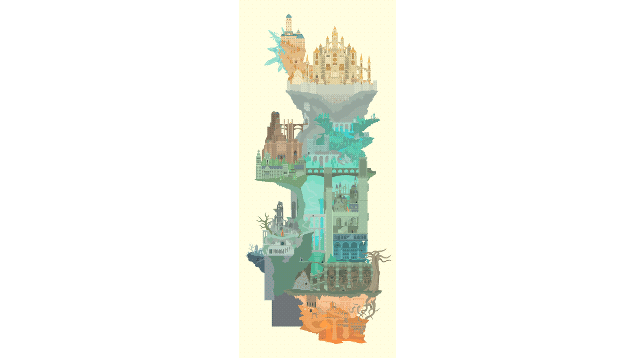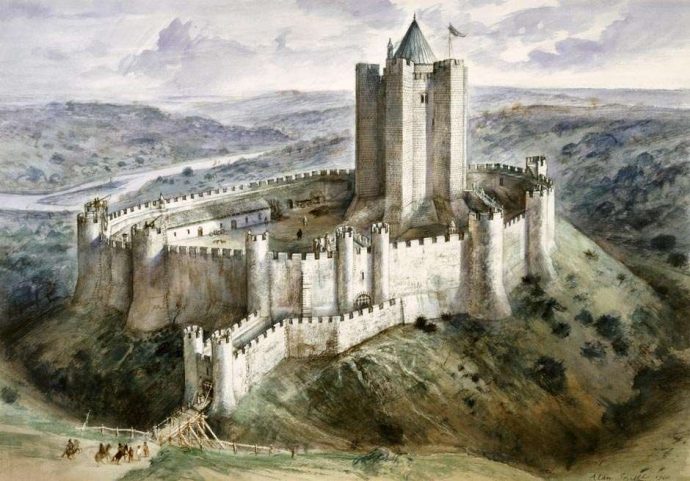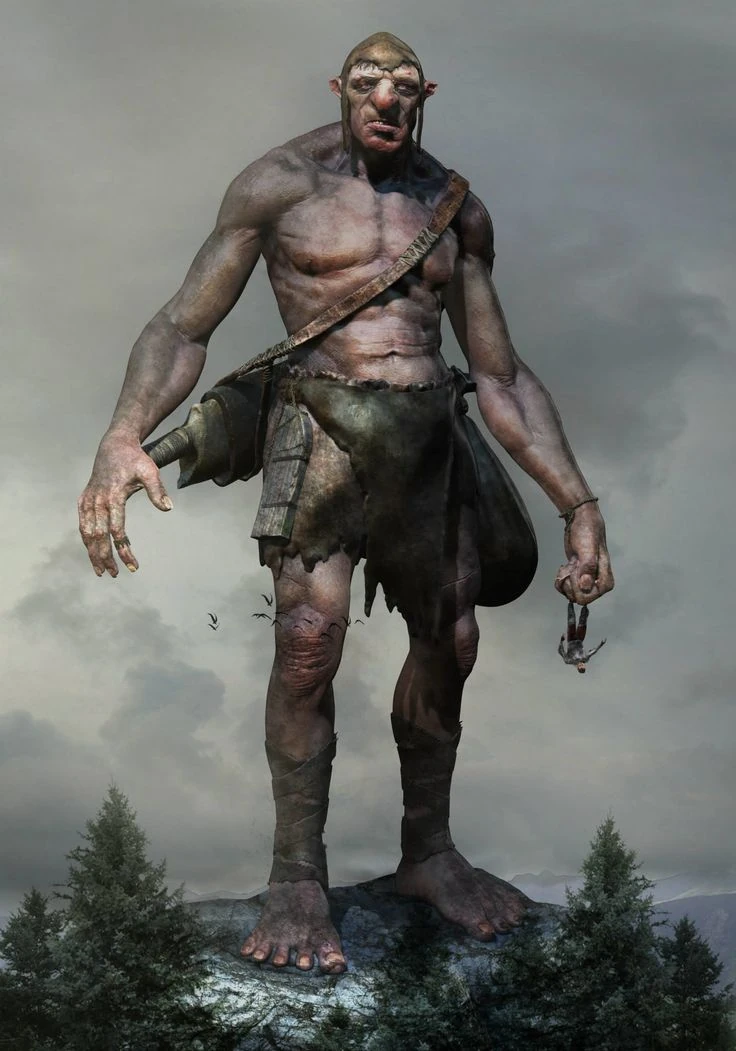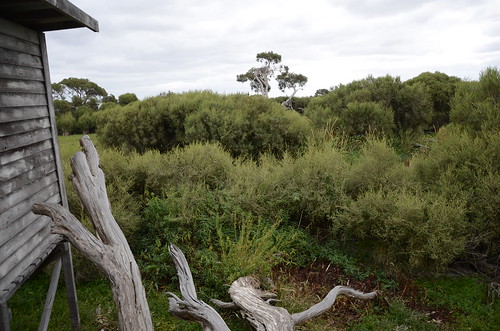I've been playing tons of Bloodborne and Dark Souls in my spare time so it's time for me to impose another souls-borne-inspired blog post on you. In DS/BB you get to choose a class for your character which determines your starting equipment and stats. Some of the classes are objectively more powerful than others, some are geared towards beginner players and some are only good if the player is experienced and knows what they are doing. Often TTRPGs worry a lot about balance between classes and will try to make them all pretty evenly matched at level 1, but I thought it might be cool to have classes that are less balanced for more variety of play experience.
The 'balance', or probably better called 'fairness', comes from classes being randomly selected instead of chosen by the player. I've written up d10 classes, which I've decided to call 'backgrounds', along with rules for character creation and advancement. As you'll see, ability scores are sometimes rolled with a different formula to 3d6 depending on the strengths and weaknesses of the background. I have roughly based this off of LotFP but with the key difference that I'm using d8 skills instead of d6. This is because skills are improved each level in a similar way to the CoC/Runequest roll-over mechanic, and using a d8 will make skill progression a bit slower.
The 'Hedge Knight' background is sort of like an easy mode while the 'Nobody' background is like a hard mode (similar to the 'depraved' class in DS).
Character Creation
Roll 1d10 to get
your background then refer to the relevant tables for your abilities,
HP, skills, starting equipment, saving throws and levelling speed.
Attack bonus for level 1 characters is +1 unless otherwise stated.
Hedge Knight
Cutpurse
Cultist
Lord's Bastard
Galley Slave
Hermit
Merchant
Barbarian
Graverobber
Nobody
Character Advancement
Upon gaining a new
level, your character will gain 1d6 + Con mod hit points and may
improve saving throws. Any skill that your character has used in a
dangerous situation since the last time you gained a level has a
chance of being improved. Roll 1d8 for each of these skills, and if
you get a higher result than your skill, increase the skill by 1. Do
the same for attack bonus, which caps at +8.
Hedge Knight
You were once a
knight but fortune has left you without a lord to serve or lands to
protect. You wander the land subsisting with little more than your
martial skills.
|
Abilities
|
Hit Points
|
Skills
|
Equipment
|
Saves
|
Levelling
|
Str: 2d6+6
Con: 2d6+6
Dex: 3d6
Int: 3d6
Wis: 3d6
Cha: 3d6
|
1d8 + Con mod
|
Bushcraft 2-in-8
Attack +2
All others 1-in-8
|
Any two weapons
Chain mail
Backpack
2d6 x 10 sp
|
Paralyze – average
Poison – good
Breath – average
Device – average
Magic – poor
|
Very slow
|
Cutpurse
You were
probably born on the streets. You have survived this long only by
pilfering the valuables of wealthier folk.
|
Abilities
|
Hit Points
|
Skills
|
Equipment
|
Saves
|
Levelling
|
Str: 2d6+1
Con: 3d6
Dex: 2d6+6
Int: 3d6
Wis: 3d6
Cha: 3d6
|
1d6 + Con mod
|
Search 2-in-8
Sleight 2-in-8
Stealth 2-in-8
Tinker 2-in-8
All others 1-in-8
|
Dagger
Simple clothes
Backpack
1d6 x 10 sp
|
Paralyze – average
Poison – average
Breath – good
Device – good
Magic – average
|
Slow
|
Cultist
Regardless of
where you came from, at some point in your life you were seduced by
the promise of eldritch power.
|
Abilities
|
Hit Points
|
Skills
|
Equipment
|
Saves
|
Levelling
|
Str: 3d6
Con: 2d6+1
Dex: 3d6
Int: 3d6
Wis: 2d6+6
Cha: 3d6
|
1d6 + Con mod
|
Languages 2-in-8
Search 2-in-8
All others 1-in-8
|
One random spell book
Robes
Backpack
3d6 x 10 sp
|
Paralyze – average
Poison – average
Breath – average
Device – good
Magic – good
|
Average
|
Lord's Bastard
Even though you
were born of noble blood you are of a lower social rank than your
brothers and sisters and will never own land or inherit great wealth.
|
Abilities
|
Hit Points
|
Skills
|
Equipment
|
Saves
|
Levelling
|
Str: 2d6+1
Con: 2d6+1
Dex: 3d6
Int: 3d6
Wis: 3d6
Cha: 2d6+6
|
1d4 + Con mod
|
Architect 2-in-8
Languages 2-in-8
All others 1-in-8
|
Any one weapon
Leather armour
Backpack
5d6 x 10 sp
|
Paralyze – poor
Poison – poor
Breath – average
Device – average
Magic – average
|
Average
|
Galley Slave
Years of
gruelling toil have hardened you and now that you have your freedom,
anything is possible.
|
Abilities
|
Hit Points
|
Skills
|
Equipment
|
Saves
|
Levelling
|
Str: 2d6+6
Con: 2d6+6
Dex: 3d6
Int: 2d6+1
Wis: 3d6
Cha: 3d6
|
1d6 + Con mod
|
Bushcraft 2-in-8
Climb 2-in-8
All others 1-in-8
|
Club
Simple clothes
Backpack
1d4 x 10 sp
|
Paralyze – average
Poison – average
Breath – average
Device – poor
Magic – poor
|
Fast
|
Hermit
You have spent
a considerable amount of time by yourself away from civilisation.
While you have little to your name, you have learned much in your
private studies.
|
Abilities
|
Hit Points
|
Skills
|
Equipment
|
Saves
|
Levelling
|
Str: 2d6+1
Con: 3d6
Dex: 3d6
Int: 2d6+6
Wis: 3d6
Cha: 2d6+1
|
1d4 + Con mod
|
Bushcraft 2-in-8
Tinker 2-in-8
All others 1-in-8
|
One random spell book
Simple clothes
Backpack
1d6 x 10 sp
|
Paralyze – average
Poison – good
Breath – poor
Device – poor
Magic – good
|
Fast
|
Merchant
You have
travelled far and wide, making a living from ripping off customers
and avoiding tax collectors.
|
Abilities
|
Hit Points
|
Skills
|
Equipment
|
Saves
|
Levelling
|
Str: 3d6
Con: 3d6
Dex: 3d6
Int: 3d6
Wis: 3d6
Cha: 2d6+6
|
1d6 + Con mod
|
Languages 2-in-8
Tinker 2-in-8
All others 1-in-8
|
Any one weapon
Decent clothes
Backpack
4d6 x 10 sp
|
Paralyze – average
Poison – average
Breath – average
Device – average
Magic – poor
|
Average
|
Barbarian
You are not
from here. Your customs are mysterious and your language might as
well be gibberish but you know how to survive in the wild.
|
Abilities
|
Hit Points
|
Skills
|
Equipment
|
Saves
|
Levelling
|
Str: 3d6
Con: 2d6+6
Dex: 3d6
Int: 2d6+1
Wis: 3d6
Cha: 2d6+1
|
1d6 + Con mod
|
Bushcraft 2-in-8
All others 1-in-8
|
Axe or club
Primitive clothes
Backpack
1d6 x 10 sp
|
Paralyze – good
Poison – good
Breath – average
Device – poor
Magic – poor
|
Average
|
Graverobber
Work begins for
you at nightfall. You have lived off selling the nice things that
people bury with their loved ones. It's not like they need them
anyway.
|
Abilities
|
Hit Points
|
Skills
|
Equipment
|
Saves
|
Levelling
|
Str: 3d6
Con: 2d6+6
Dex: 3d6
Int: 3d6
Wis: 3d6
Cha: 2d6+1
|
1d6 + Con mod
|
Climb 2-in-8
Search 2-in-8
Stealth 2-in-8
All others 1-in-8
|
Crowbar
Dirty clothes
Backpack
4d6 x 10 sp
|
Paralyze – good
Poison – good
Breath – average
Device – average
Magic – poor
|
Slow
|
Nobody
No one knows where you came from. You were born with nothing and
have only ever had nothing your entire life, but you are destined for
great things.
|
Abilities
|
Hit Points
|
Skills
|
Equipment
|
Saves
|
Levelling
|
Str: 2d6
Con: 2d6
Dex: 2d6
Int: 2d6
Wis: 2d6
Cha: 2d6
|
1d4
|
All 1-in-8
|
Wooden pole
Wretched clothes
Backpack
One lucky silver coin
|
Paralyze – poor
Poison – good
Breath – average
Device – poor
Magic – poor
|
Very fast
|
Character Advancement Chart
|
Level
|
Saves
|
Experience Points Needed (Levelling)
|
|
Good
|
Average
|
Poor
|
Very Slow
|
Slow
|
Average
|
Fast
|
Very Fast
|
|
1
|
11
|
14
|
16
|
0
|
0
|
0
|
0
|
0
|
|
2
|
11
|
14
|
16
|
3,000
|
2,200
|
2,000
|
1,750
|
1000
|
|
3
|
11
|
14
|
16
|
6,000
|
4,400
|
4,000
|
3,500
|
2000
|
|
4
|
11
|
12
|
14
|
12,000
|
8,800
|
8,000
|
7,000
|
4000
|
|
5
|
9
|
12
|
14
|
24,000
|
17,600
|
16,000
|
14,000
|
8000
|
|
6
|
9
|
12
|
14
|
48,000
|
35,200
|
32,000
|
28,000
|
16,000
|
|
7
|
9
|
10
|
12
|
96,000
|
70,400
|
64,000
|
56,000
|
32,000
|
|
8
|
9
|
10
|
12
|
192,000
|
140,800
|
128,000
|
112,000
|
64,000
|
|
9
|
7
|
10
|
12
|
384,000
|
281,600
|
256,000
|
224,000
|
128,000
|
|
10
|
7
|
8
|
10
|
576,000
|
422,400
|
384,000
|
336,000
|
256,000
|




